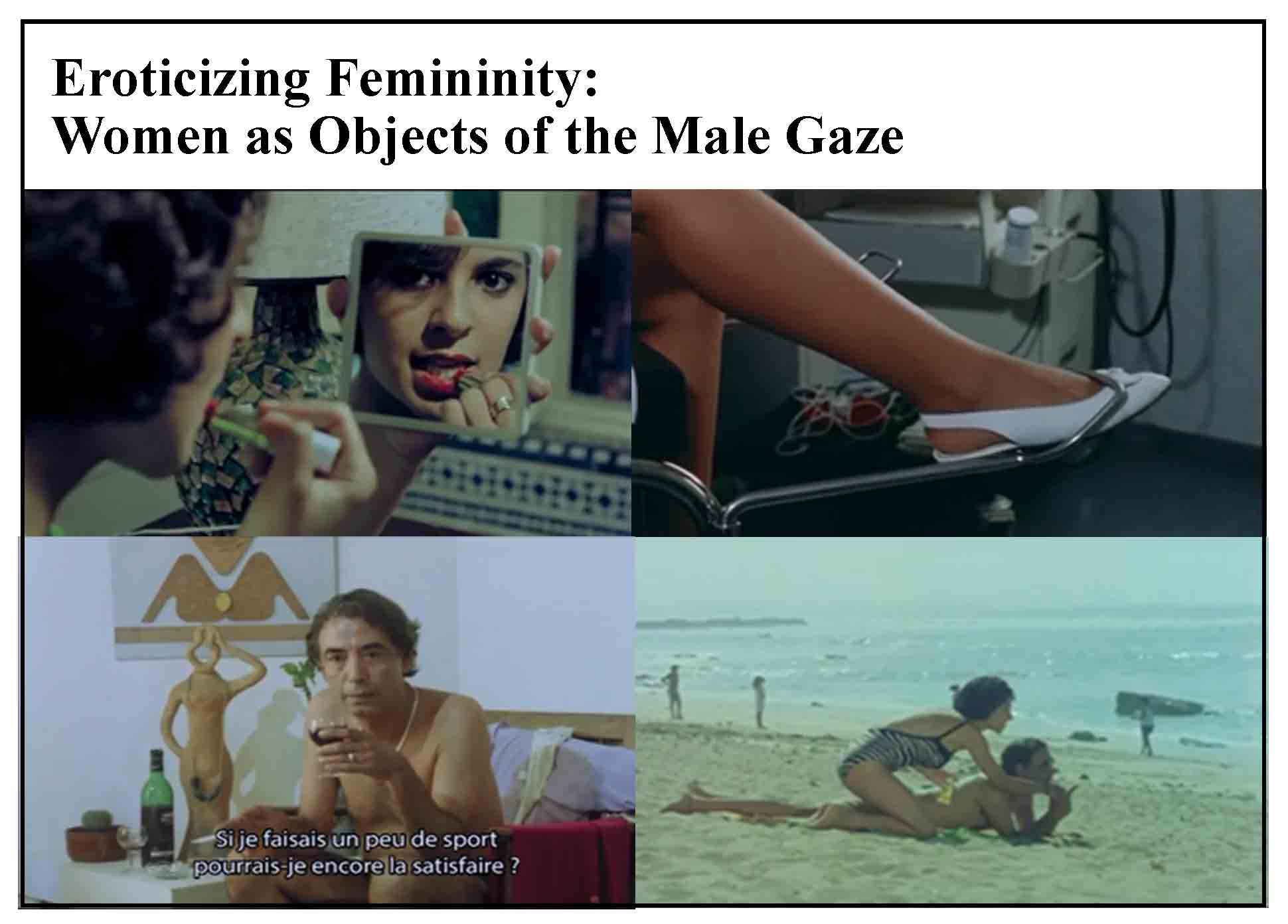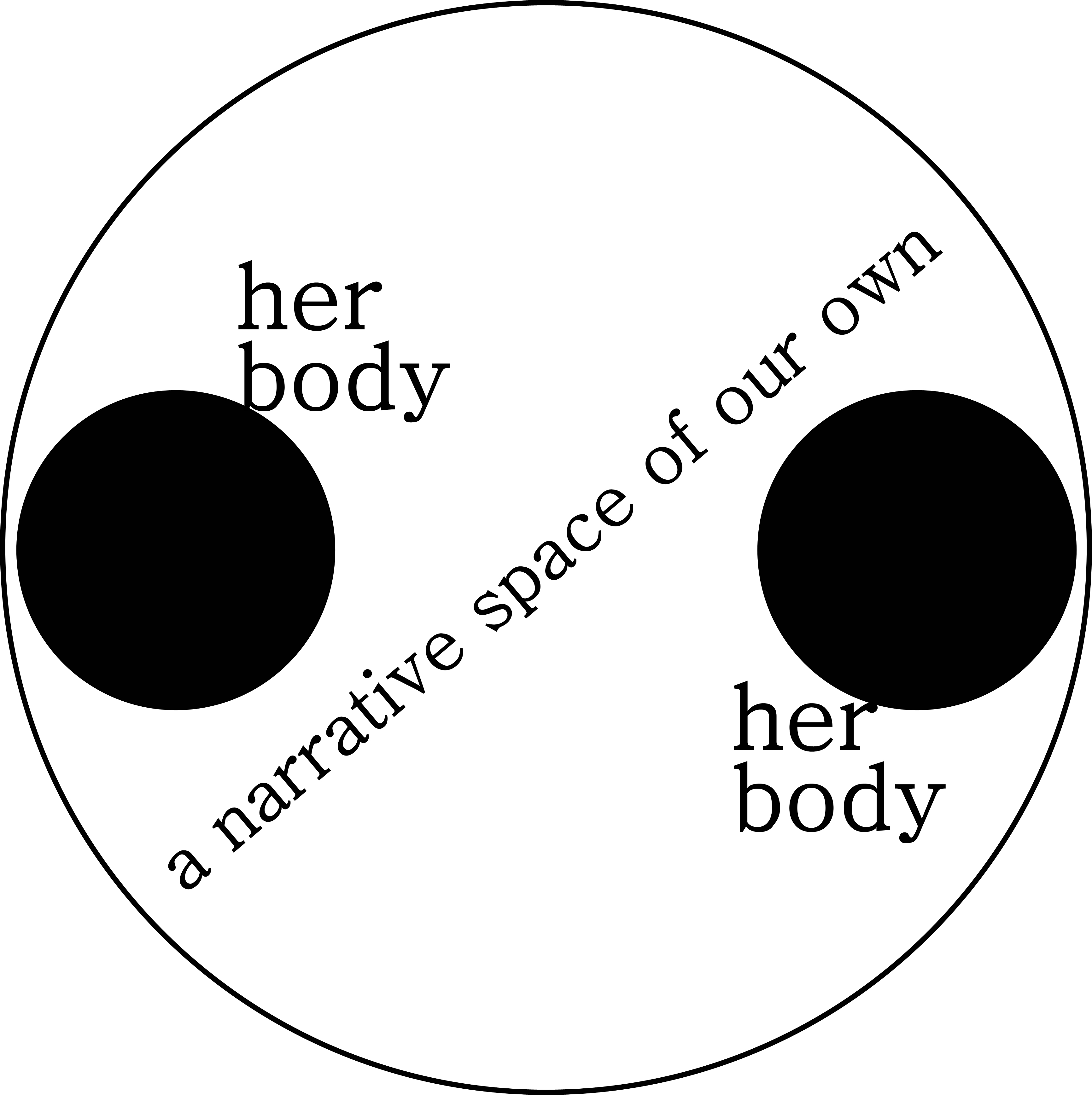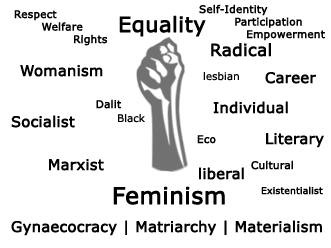Article Title :
Eroticizing Femininity: Women as Objects of the Male Gaze in Abdelkader Lagtaâ’s A Love Affair in Casablanca 
7 (2023)
1-9
patriarchal hegemony , male gaze , femininity , female body , commercial film


This article aims to interrogate the portrayal of the female body and the sexual politics of the male gaze in ‘Abdelkader Lagtaâ’s A Love Affair in Casablanca’. It argues that the cinematic discourse that contests patriarchal hegemony through liberating the female body objectifies and fragments women’s identity. Hence, the erotic representation of the women characters in Lagtaâ’s film empowers patriarchal hegemony by gratifying male heterosexual desires. Therefore, this article analyzes and examines the film’s text and iconography to examine how Lagtaâ contradicts his liberal attitudes vis-à-vis the emancipation of women from the suppressive sways of patriarchy. Additionally, his commercial film approach stimulates the pleasure in looking and reinforces the subjugation of women. Therefore, although the film director has tried to give the main female character a central role within the film narrative, he could not go beyond the representational politics of defamation against femininity and gender identity.

This article interrogates the portrayal of the female body and the sexual politics of the male gaze in Abdelkader Lagtaâ’s film vision.
The film’s text and iconography unearth how Lagtaâ contradicts his liberal ideas vis-à-vis the representation of women.
The image of Seloua, the main character, stimulates the spectator’s need to feed his ego by identifying with the male protagonists and their phallocentric hegemony.
Through the gaze of Jalil and the camera lens of Najib, Seloua’s body is turned into a sexual icon; it is displayed for the entertainment of male spectators.
Lagtaâ has had the courage to contest and transgress the social norms surrounding the notion of sexuality in Morocco.
In the dramatic view of Lagtaa, women are portrayed according to monolithic gendered stereotypes that men construct to perpetuate their power in society.
Armes, R., 2006. African Filmmaking: North and South of the Sahara. Edinburgh: Edinburgh Indiana University Press.
Austin, G., 2019. Contemporary French Cinema: An Introduction. Manchester: Manchester University Press.
Bowen, D., 2002. Trends of the 1990s: Changing Audiences, Changing Features: Everyday Life in the Muslim Middle East, edited by Evelyn A. Early. Indiana University Press.
Carter, G. S., 2009. What Moroccan Cinema? A Historical and Critical Study 1956-2006. Lanham, MD: Lexington Books.
Chaudhuri, S., 2006. Feminist Film Theorists: Laura Mulvey, Kaja Silverman, Teresa de Lauretis, Barbara Creed. London: Routledge.
Chinyere, E, A., 2015. Depictions of Femininity and Female Sexuality across Levels of Culture in Contemporary Hollywood. Senior theses. Trinity College, Hartford.
Dwyer, K., 2004. Hidden, unsaid, taboo in Moroccan cinema: Abdelkader Lagtaâ's challenge to authority. Framework. The Journal of Cinema and Media, 43(2), 117.
Florence, M., 2011. Screens and Veils: Maghrebi Women's Cinema. Bloomington: Indiana University Press.
Golley, N. A-H., 2010. Reading Arab Women's Autobiographies: Shahrazad Tells her Story. Texas: The University of Texas Press.
Ibertsberger, S., 2007. Tanya Krzywinska: Sex and the Cinema. MEDIEN Wissenschaft: Rezensionen, 24(2), 209-211.
Johnston, C., 1999. Women’s Cinema as Counter-Cinema. In Feminist Film Theory: A Reader. Edinburgh University Press.
Kuhn, A. and Guy, W., 2012. A Dictionary of Film Studies. Oxford: Oxford University Press.
Lagtaâ, A., 1991. A Love Affair in Casablanca [Film]. The United Cinematographers Production.
Mohanty, C. T., 2006. Under western eyes: feminist scholarship and colonial discourses. Feminist Review, 30(1), 61-88.
Mulvey, L., 2004. Visual Pleasure and Narrative Cinema. The Routledge Reader in Gender and Performance. Taylor and Francis, 296-301.
Orlando, V., 2009. Francophone Voices of the" new" Morocco in Film and Print: (Re) presenting a Society in Transition. New York: Palgrave Macmillan.
Orlando, V., 2011. Screening Morocco: Contemporary Depictions in Film of a Changing Society. Ohio: Ohio University Press.
Sadiqi, F., 2002. Women, Gender and Language in Morocco. Brill: Leiden Boston.
Sijilmassi, A., 2020. Hiwar ma’a Al-mukhrij Abdelkader Lagtaâ [Interview with the film director, Abdelkader Lagtaâ]. Cinefilia.
Tbatou, H., 1998. A-ssinema Al-maghrebiya w Aadiyat Al-mara’a: I’htiyajat Al- ibdaa w I’htiyajat A-zzamn Al-maghribi [ Moroccan Cinema and the Issue of Woman: Creativity and Moroccan Era Requirments]. Al-a’hdat Al-maghrebiya 41, 50.
Tbatou, H., 1999. A-ssinema al-Maghrebiya: Qadaya al-Ibda’a wa al-Huwia (Moroccan Cinema: Issues of Creativity and Identity). Tangier: Siligraphe.
Thornham, S., 2006. Feminism and Film. The Routledge Companion to Feminism and Post-Feminism, edited by S. Gamble. London: Routledge.






